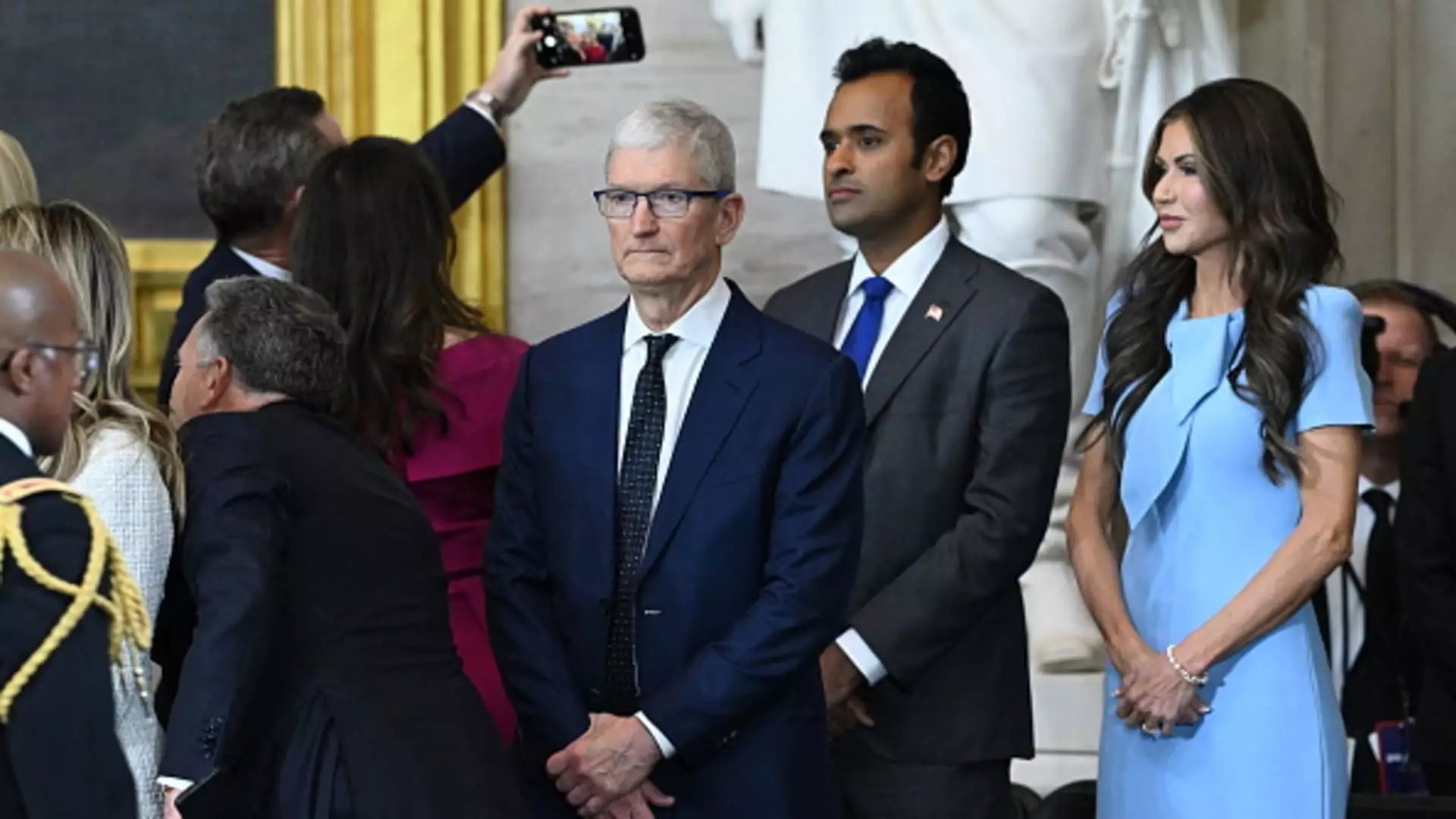Tim Cook, the venerated CEO of Apple, recently spoke to investors on the company’s earnings call, offering an unsettling glimpse into the intricate web of challenges posed by the Trump administration’s tariffs. Given the considerable anticipation from stakeholders, it is revealed that Apple has only experienced a “limited impact” from these tariffs during the initial quarter of the year. However, the forecast of an additional $900 million in tariff costs for the current quarter sent shivers down investors’ spines. Surprisingly, many analysts had anticipated a much steeper financial blow. This discrepancy raises an essential question about the market’s grasp on Apple’s operational resilience.
The caveat here is Cook’s prudent optimism tempered by precaution—he admitted uncertainty beyond June. With no clear roadmap in sight, Apple finds itself dancing in a minefield of tariff implications that could alter its famed efficiency and operational prowess. Instead of providing detailed forecasts, Cook chose ambiguity, which has become all too familiar with corporate leadership in these tumultuous times. Apple shares dropped nearly 4% in extended trading, a knee-jerk reaction to the unrelenting tide of uncertainty.
The Paradox of Strong Sales Amidst Tariff Turmoil
While Apple’s revenue figures managed to beat Wall Street expectations—propelled largely by an uptick in iPad and Mac sales—the company’s inability to provide clarity regarding future costs was disconcerting. This paradox of burgeoning sales shrouded in an aura of instability demonstrates how even industry giants can be cornered by external political mechanisms. Consumers may still adore Apple products, yet the shadow of tariffs looms ominously over the company’s long-term strategy and consumer confidence.
Apple’s operational methods have long been regarded as golden, but the volatility ignited by the administration’s tariff policies calls into question the efficacy of their well-laid plans. The commendable supply chain optimization mentioned by Cook is certainly impressive, yet it raises questions about the sustainability of these alternatives in a shifting geopolitical landscape. As Apple navigates sourcing from countries like India and Vietnam—where a tenuous 10% tariff currently applies—there lies the potential for rapid policy shifts that could negate the current benefits altogether.
Inventory Strategies: A Double-Edged Sword
In a shrewd move, Apple has reportedly built inventory ahead of the tariffs, a strategy that will appear as manufacturing purchase obligations in SEC filings. While this may have provided a buffer in the short term, it risks sending mixed signals to consumers and investors alike. Stockpiling inventory can alleviate immediate tariff pressures, but it could also foreshadow an eventual price increase if ongoing tariff implications begin to erode margins.
Cook’s assertion that there’s “no obvious evidence” of consumers rush-buying Apple products ahead of impending tariffs further complicates the narrative; it hints at consumer wariness and the possibility of future demand dips. The paradox of a premium brand entwined in mass-market consumer behavior exposes the fragility that underlies the company’s strategy.
The Broader Tech Landscape: A Ripple Effect
Apple is not alone in this labyrinth of tariffs; other tech titans are grappling with similar tribulations. Amazon’s leadership has acknowledged the looming uncertainty, hinting at possible consumer demand weakening due to inflationary pressures. Microsoft has as well tightened its belt on pricing for products like Xbox, revealing the holistic impact of tariff policies across the tech spectrum.
If the tech industry—a crucial pillar of modern economic growth—finds itself enmeshed in this tarry quagmire, the repercussions could ripple out far beyond Silicon Valley. The fear is not only for immediate financial repercussions, but for the collaborative ecosystem that has thrived on innovation and competitive pricing. Perceived value may shift as companies either raise prices or scale back product offerings, creating an uneasy balance that consumers must navigate.
As the clock ticks toward July, with India and Vietnam bracing for potential tariff escalations, the stakes grow momentously higher for Apple and the tech sector at large. The very strategies that have positioned Apple as an operational juggernaut could become its Achilles’ heel if future tariffs disrupt sourcing channels or pricing strategies.
Tim Cook’s resolve may be commendable, but whether it translates into tangible results or merely serves to reassure investors in uncertain times remains to be seen. The question that lingers is not simply about Apple’s immediate financial outlook but about the broader implications of an administration pulling the strings of global trade and corporate strategies—a precarious tableau that could redefine the future of corporate America.


Leave a Reply